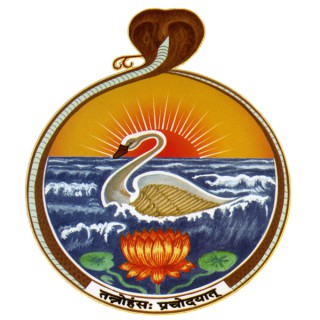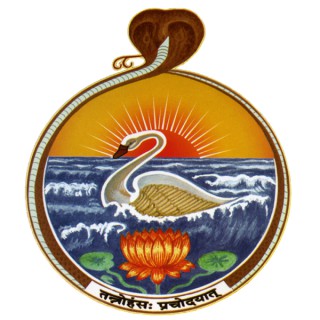Drg Drsya Viveka | The Seer and the Seen
Follow Drg Drsya Viveka | The Seer and the SeenAn Introduction to " Drg-Drsya-Viveka " Sri Shankaracharya holds a pre-eminent position among the world's master-minds and spiritual teachers. 'Drg-Drsya-Viveka' is one of the great Acharya's introductory treatises (traditionally called 'prakarana-granthas') on Advaita Vedanta which teaches the…
Vedanta Society, San Francisco
- Jun 6, 2019 LATEST EPISODE
- infrequent NEW EPISODES
- 56m AVG DURATION
- 8 EPISODES
More podcasts from Vedanta Society, San Francisco
Latest episodes from Drg Drsya Viveka | The Seer and the Seen

8 - The Spiritual Psychology behind Waking, Dreaming and Deep-Sleep States | Swami Tattwamayananda
Verses: 43, 44, 45- The reality/unreality of dreams.- What is Pratibhasika reality?- 'Turiya' is present in all the three states of waking, dreaming and deep sleep, but also transcends them all.- Existence, Consciousness and Bliss, which are the natural characteristics ‘swarupa-lakshana’ (‘स्वरूप-लक्षण’) of the 'Sakshi ('साक्षी) or Brahman appear to inhere in the 'Vyavaharika Jiva' and the 'Pratibhasika Jiva'.

Verses: 32, 33, 35, 40, 41- Psychological problems can have no permanent solutions at the psychological level.- They can have permanent solutions only at the spiritual level.- Ascent in self-identity: Contrasting examples of Fyodor Dostoevsky and Valmiki, the great Sanskrit poet of India and the author of the ancient classic 'Ramayana'.- Only the non-participating Witness ( the 'Self' - साक्षी) is Absolutely Real because it is unchanging.- The appearance of 'Jiva' is only because of the association of 'Upadhis'.- The two powers in Maya:- The power of false projection (vikshepa-sakti)- The power of concealing the true nature of the reality (avarana-sakti).- 'Maya' is neither Absolutely Real, Nor Absolutely Unreal.- अवछ्छेदवाद, आभासवाद, and प्रतिबिम्बवाद further elaborated. (verse: 33)- Who is the highest devotee of God? How to reach that level?- The three levels of Reality in Advaita Vedanta explained.

6 – ‘Savikalpa Samadhi' (Meditation) Practiced with an External Object (Sound/Mantra) | Swami Tattwamayananda
Verses: 27, 28, 30- 'Madhyama samadhi' explained. - The great statement ('Mahavakya'): 'TATTWVAMASI' ( तत्त्वमसि )explained .- Analysis of the two 'padarthas': 'tat' and 'tvam' .- Importance of ' Śraddhā (श्रद्धा) for the student/ spiritual aspirant.- Link to the transcendental: its usefulness in everyday life. - Constant, natural effortless, spontaneous contemplation on Brahman. - Highest devotion (भक्ति), and the highest knowledge ( ज्ञानं ) are the same at the experience level.- Natural state of a 'Jivanmukta' ('liberated-in-life'):- How all delusions vanish with the dawn of Advaitic experience: the fetters of the heart are broken, all doubts and negativity disappear.- Every activity becomes an act of worship, every word becomes a sacred 'mantra', every thought becomes a meditation, the secular merges with the spiritual, and the whole life becomes spiritualized.

5 - The Real and the Unreal in Everything That We Perceive and Experience | Swami Tattwamayananda
Verses: 20, 26, 27- Everything in this world has five aspects, ie, the permanent, unchanging substratum consisting of Existence- Consciousness - Bliss ( सत्- चित् - आनन्द ), and the impermanent changing aspect, consisting of names and forms, (nama-rupa ) which constitute 'Maya'. - The Absolute Reality, Existence- Consciousness - Bliss (सत्- चित् - आनन्द) is beyond the five conditions of verbalization ( beyond the five categories of definitions, descriptions etc. (sabda-pravritti-nimitta). - Nirvikalpa-samadhi explained: - The mind of a person who has attained 'Nirvikalpa Samadhi' compared to a lamp kept in sheltered, windless place- it never flickers; it is always steady. - The five states of mind according to Yoga psychology explained: Ksipta, Mudha, Viksipta, Ekagra, Niruddha - Different forms of 'Samadhi': (a) with the help of an external object and, (b) with the help of an internal object.

Verses: 16, 17, 37, 38, 31- Jiva, The embodied Self , freed from the veiling and projecting powers of Maya, discovers its true identity with the non-participating Witness (साक्षी) .- Then we realize that all 'vikaras' (changes) belong to the world only.- What is 'Prarabdha-Karma '? How does it operate in our everyday life?- Shankaracharya's rejection of the Mimamsakas' obsession with Vedic ritualism.- Three approaches to Reality in Advaita: Paramarthika, Vyavaharika and Pratibhasika - अवछ्छेद वाद, आभासवाद, and प्रतिबिम्बवा: more details. - Constant contemplation, unbroken flow of awareness - The different schools of Advaita Vedanta: 'Bhamati', 'Vivarana' and 'Vartika' - The illustration from the Chandogya Upanishad: Spiritual awakening and the role of an 'Acharya' or a 'Guru".

Verses: 10 - 14 - Waking (जाग्रत), Dreaming (स्वप्न), Deep Sleep (सुषुप्ति) and beyond: Turiya (तुरिय)- The 'I' consciousness in the three states of consciousness: 'THE WITNESS'.-The psychological and spiritual dynamics of ' AVASTHATRAYA '-'Avasthatraya- saakshi'. - The mechanism of Maya and 'adhyasa' (अध्यास:)- The mystery of Maya and how does it work in our life?- Concealment of our true nature and false projection.- The two functions of 'Maya' elaborated: the power of veiling the Reality and the power of projection, causing the expansive manifestations of the manifold creation.- The way out of Maya: Sadhana-chatushtaya (the four spiritual disciplines: Ref: class:2).- Shravana, manana, nididhyasana & devotion- (bhakti) eventually, through Moksha.- Atman, the non-participating witness.- अवछ्छेद वाद, आभासवाद, and प्रतिबिम्बवाद elaborated.- The spiritual aspect of perfect health.- The mystery of creation - in Advaita Vedanta.

2 - Identifying Ourselves as The 'Witness' (साक्षी) | Swami Tattwamayananda
Verses 1, 2, 3, 5A brief overview of the text and the topics discussed:-The eternal conflict: What we want and what our mind is willing to do.-The cause of problems in our everyday life: forgetting the impermanence of the worldly experiences.-The subject and the objects, the seer ('drashta') and the seen ('drshya'), the perceiver and the perceived, the witness and the witnessed -A phenomenological approach-The form is the seen and objectified. -Worldly objects and experiences change every moment.-Atman is the unchanging seer and the eternal witness (साक्षी), which is beyond immanence and transcendence.-Atman, the eternal, unchanging revealer of all, the 'light of all lights'.

- 'Drg-Drsya-Viveka' is an introductory book on Advaita Vedanta, technically called a 'Prakarana Grantha (प्रकरण ग्रंथ), which teaches the identity and oneness of the individual Jiva and Paramatman. - Vedanta is not a new knowledge; it reminds us of our true reality; it is the re-discovery of our own true nature. - Atman (knowledge of Atman) is not something that could be produced or transformed or attained or purified. - (" न उत्पाद्यं, न विकार्यम्, न आप्यं, न संस्कार्यं " - Shankaracharya’s commentary on the Ishavasya Upanishad). Some important topics discussed are:-Spiritual sleep and awakening-The laws of karma and re-incarnation-The wheel of karma - vrtti - samskara - vasana - samkalpa and again karma...-The importance of Sadhana Chatushtaya (साधनचतुष्टय)-Different forms of 'samadhi'.

















